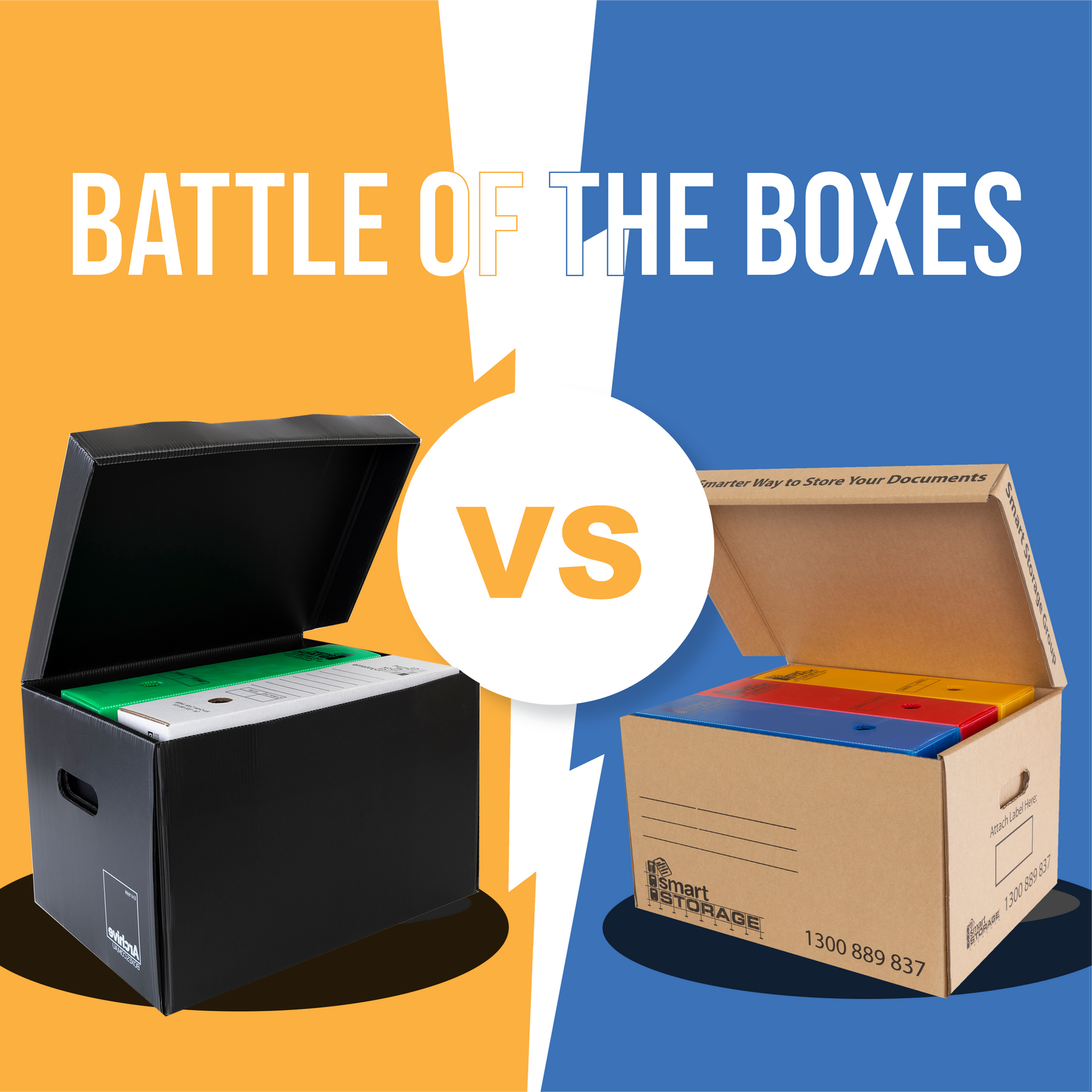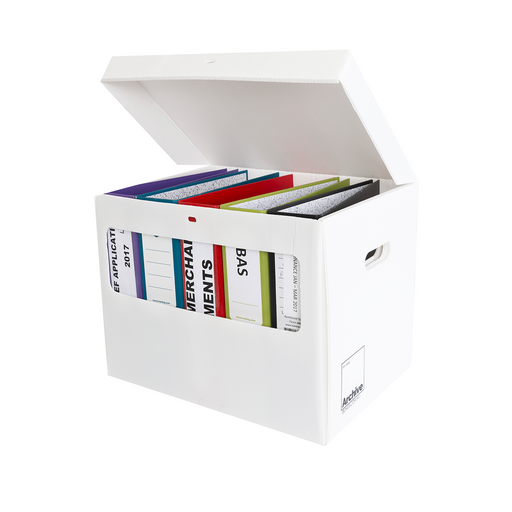
Battle of the boxes: Cardboard vs Plastic

When looking for office storage or personal storage we are often faced with two container options, cardboard or plastic. Each has their pros and cons and both are available through our online store but today at Archive Boxes Australia we want to settle the debate once and for all.
We will be putting our boxes to the test in 6 categories; Durability, Stack-ability, Cost, Product Variation, Recyclability, Environmental impact and a final overall rating to determine the winner.
Let’s get into our first category
Durability
Cardboard boxes are generally constructed from two layers of paper laid on either side of a sheet of corrugated paper pulp, and folded into the box shape from a single piece of cardboard. How long a cardboard box remains functional for storage is entirely dependent upon its environment. Cardboard is ultimately made of the same materials as the documents which it is supposed to protect, they are susceptible to moisture, mould, fire and vermin that like to live in the dark. Even gravity can have a detrimental effect upon them as they steadily deteriorate underweight when stacked on top of one another.
Plastic is of course renowned and infamous for its durability. A standard corflute polypropylene box can last up to 400 years. It is both stronger and lighter than it’s cardboard counterpart and resistant to moisture, fire and rodents. It is capable of supporting its own weight and can be stacked.
In terms of providing protection to documents or any other items, plastic is the clear winner in this round.
Stack-ability
We touched on this attribute a little bit in the previous round, in optimal conditions cardboard boxes can be stacked safely and effectively up to 3 layers, a shelving unit is highly recommended for any higher stacking.
Plastic has a far greater ability to be stacked due to its superior strength and rigidity. In addition to this, plastic can be moulded with greater variety. This means that containers with interlocking grooves can be purchased for even more stability when stacked.
Cost
After comparing prices of our own boxes as well as other storage container providers, we found that on average plastic containers are cheaper. The reason for this is because of the heavier weight of cardboard leads to greater transportation costs. In simple terms shipping 100kg of Plastic Containers will give you more individual containers than if you shipped the same weight of cardboard boxes.
Plastic takes this round too.
Recyclability
When it comes to recyclability things get a lot closer. Most countries have had recycling programs for both cardboard and plastic in place for years. Using recycled materials significantly reduces the amount of resources required to make a product, namely, water and energy. This article from The ecobahn.com takes a great in depth look at the recyclability of the two materials and finds some interesting results;
“ Recycling 1 ton of cardboard requires around 25% less energy than making it from new materials, and up to 50% less water.
Plastic recycling is even more beneficial, with 1 ton of plastic requiring 65% to 88% less energy than making it from new materials.” (Devitt 2020 Ecobahn)
Ultimately the recyclability of plastic is hugely dependent upon whether it is disposed of correctly and not sent to landfill. As plastic waste is a big environmental issue.
And so we narrowly award this round to cardboard.
Environmental Impact
The ultimate determinant of environmental impact comes down to the raw materials and processes required to create the product. Cardboard is made from paper, which of course comes from trees. Plantation forests can be replanted and so it is considered a renewable resource. However if the paper is sourced from old growth forests then it is negatively contributing to deforestation. Plastic of course comes from oil, a non renewable resource which goes through an extensive refinement process which is damaging to the environment. However recycling and research and development are leading the way to find environmentally friendly alternative resources for the future.
This round goes to sustainably sourced cardboard for now.
Product Variation
The strength and durability of plastic allows for it to be more modular and crafted into a larger variety of products than cardboard. Whether you’re storing comics, a4 files or even moving house, there’s a box for that and they’re all moisture, fire and vermin resistant. Cardboard boxes can be limited as they can lose structural integrity as they become larger.
This round goes to Plastic.
Overall
When it comes down to which product is better at doing its job, storing things safely and without compromise. Plastic containers win hands down. However its environmental impact is worth considering and you should look for containers made from recycled plastic where possible.
Make sure to check out archiveboxes.com.au to get whichever storage containers you require.










